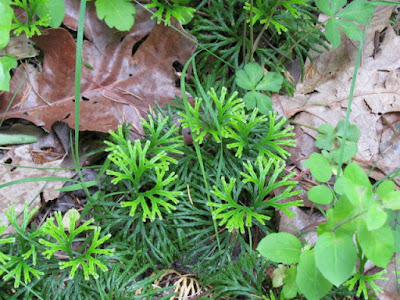One of my fondest childhood memories is dew-worming with my Dad (Ron Simmons). We’d go out at dusk with a red lighted flashlight, sometimes after Dad had watered an area earlier in the day. I don’t remember ever buying worms; we just “harvested” them ourselves. Even as a child I learned the best way to grab a worm without breaking it before it escaped back into its earthly home.
Dad and me fishing on Anderson Lake
Most people know that earthworms (also called night
crawlers) are very beneficial for our soil. They daily consume their weight as
they grind large organic materials into smaller ones. The University of Illinois
Extension Herman the Worm website) calls the earthworm “one of nature’s top
soil scientists.”
Worms benefit the soil in many ways. The add air and water, which produces a perfect growing environmental for most plants. They essentially “turn” the soil as they bring organic matter down and mix it with the soil below. When they eat, they leave behind castings that area very valuable type of fertilizer. The equivalent of about one third pound of top-grade fertilizer is produced per worm each year. As the website says, “Having worms around in your garden is a real good sign that you have a healthy soil.”
A fact about earthworms that most people don’t know is that they are not native to North America. Early European settlers brought them here during the 1600’s and 1700’s. They tagged along in the soil of plants brought from their country. Fortunately, this foreign critter has proved to be mostly beneficial.
Here are some other interesting facts about worms. In one acre of land, there can be more than a million earthworms. The slimy excretion of earthworms contains nitrogen, which is required for plant growth. Baby worms hatch from cocoons smaller than a grain of rice. Worms don’t have eyes, but they can sense light (which is why Dad and I covered our flashlights with clear red covering). The number of rings or segments of the body is species dependent: the common earthworm has about 150 segments while the red worm has about 95.
Obviously, worms are an important component in any composting process. An increasingly popular form of worm composting –vermiculture –uses worms to turn kitchen scraps into compost. It is easy and cheap. This process uses a red worm, not the larger earthworms. Take a plastic bin with holes drilled in it, newspaper, soil, worms, and fruit or vegetable peelings and you’ll soon have “black gold” to use in houseplants or outside.
So, the next time you thread a worm onto a fishing hook,
remember that they are much more than fish bait. Good luck fishing and Happy
Father’s Day!
Published in Canton Daily Ledger Column on 6-15-2013
NOTE: Since this article was written, the invasive jumping worm has been found in Illinois. View this Invasive Species Alert: Jumping Worms for more information.

























